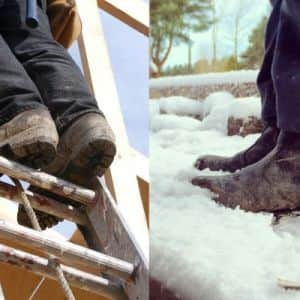Springtime Construction Safety
Published on April 1, 2019 by Brenda Forton

Winter has passed, and Spring has finally sprung! Spring weather is unpredictable to say the very least, bringing with it equally unpredictable safety hazards. You may walk out your door one morning in a heavy winter coat, and return home wearing a t-shirt. The key is being prepared for whatever mother nature has in store.
Spring's fluctuating temperatures and frequent rain showers pose a different set of problems on the job site. Frosty spring mornings can warm up significantly by early afternoon. Dress in layers that can be removed as the day heats up. Drinking plenty of water will help you remain hydrated.
Be prepared for the variants in weather conditions, cold, snow, rain, wind, and sun. Keep a plastic bin with a variety of clothing options and weather-resistant personal protective equipment (PPE) that is in line with OSHA's PPE standards in your vehicle. Items such as sunscreen, bottled water, and non-perishable snack items would also make a great addition. Dehydration and low blood sugar can lead to dizziness and instability, especially when working at elevated heights.
Slip and fall hazards quickly become a concern when the rising temperatures turn frozen dirt into mud. Be mindful of wet conditions especially when using ladders or working on roofs or scaffolding. Always wear the right PPE for the job. Falls are a leading cause of injury and death in the construction industry. OSHA's most common citations are directly related to fall protection standards.
Consider taking online safety training with courses such as Construction Health and Safety Compliance, Construction Safety and 29 CFR 1926 Stairways and Ladders. Course selections may vary from state to state as well as state required education standards. Company training discounts on state-approved online safety training for your entire crew is available 24/7 at www.licensetobuild.com.
Builder Resources
What You Need to Know About PPE
